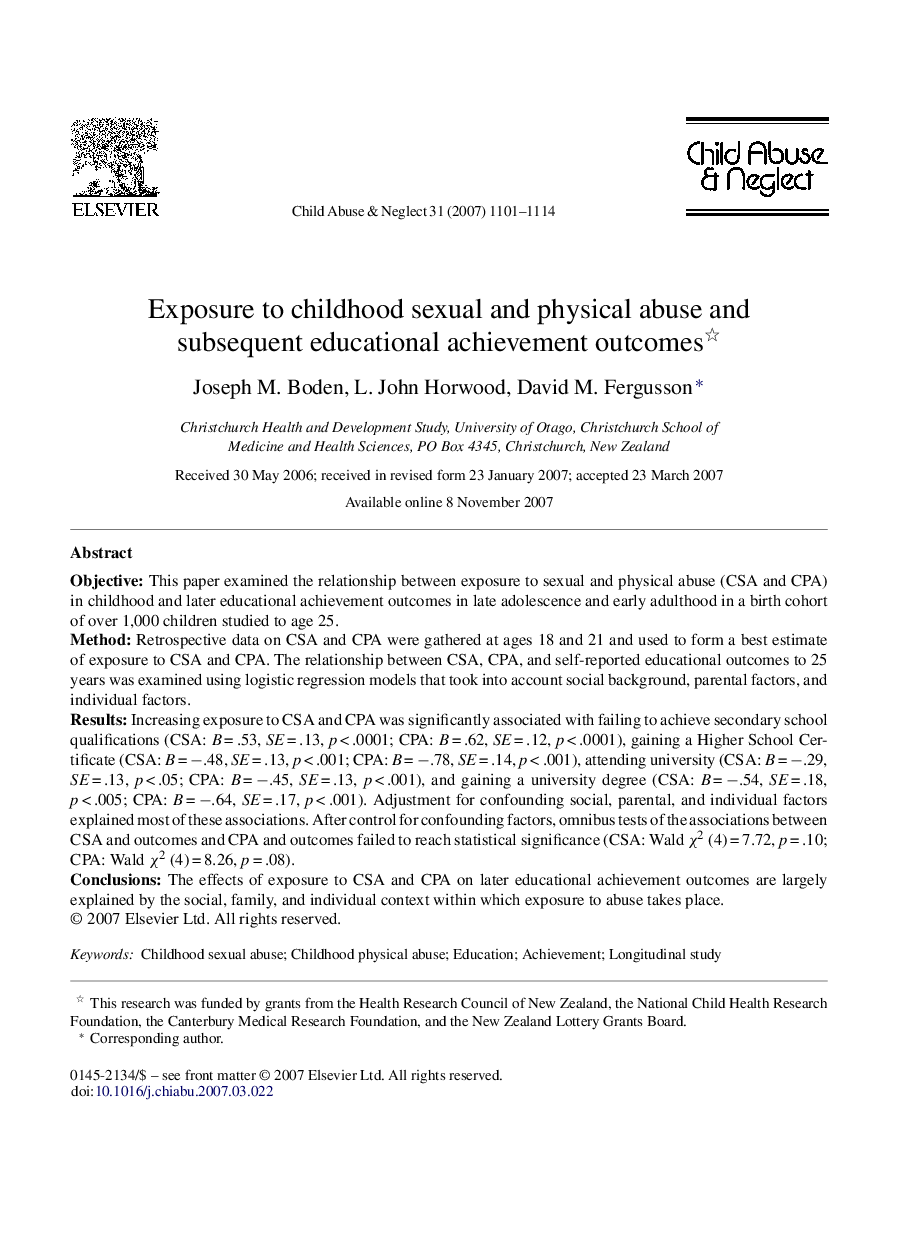| Article ID | Journal | Published Year | Pages | File Type |
|---|---|---|---|---|
| 345539 | Child Abuse & Neglect | 2007 | 14 Pages |
ObjectiveThis paper examined the relationship between exposure to sexual and physical abuse (CSA and CPA) in childhood and later educational achievement outcomes in late adolescence and early adulthood in a birth cohort of over 1,000 children studied to age 25.MethodRetrospective data on CSA and CPA were gathered at ages 18 and 21 and used to form a best estimate of exposure to CSA and CPA. The relationship between CSA, CPA, and self-reported educational outcomes to 25 years was examined using logistic regression models that took into account social background, parental factors, and individual factors.ResultsIncreasing exposure to CSA and CPA was significantly associated with failing to achieve secondary school qualifications (CSA: B = .53, SE = .13, p < .0001; CPA: B = .62, SE = .12, p < .0001), gaining a Higher School Certificate (CSA: B = −.48, SE = .13, p < .001; CPA: B = −.78, SE = .14, p < .001), attending university (CSA: B = −.29, SE = .13, p < .05; CPA: B = −.45, SE = .13, p < .001), and gaining a university degree (CSA: B = −.54, SE = .18, p < .005; CPA: B = −.64, SE = .17, p < .001). Adjustment for confounding social, parental, and individual factors explained most of these associations. After control for confounding factors, omnibus tests of the associations between CSA and outcomes and CPA and outcomes failed to reach statistical significance (CSA: Wald χ2 (4) = 7.72, p = .10; CPA: Wald χ2 (4) = 8.26, p = .08).ConclusionsThe effects of exposure to CSA and CPA on later educational achievement outcomes are largely explained by the social, family, and individual context within which exposure to abuse takes place.
